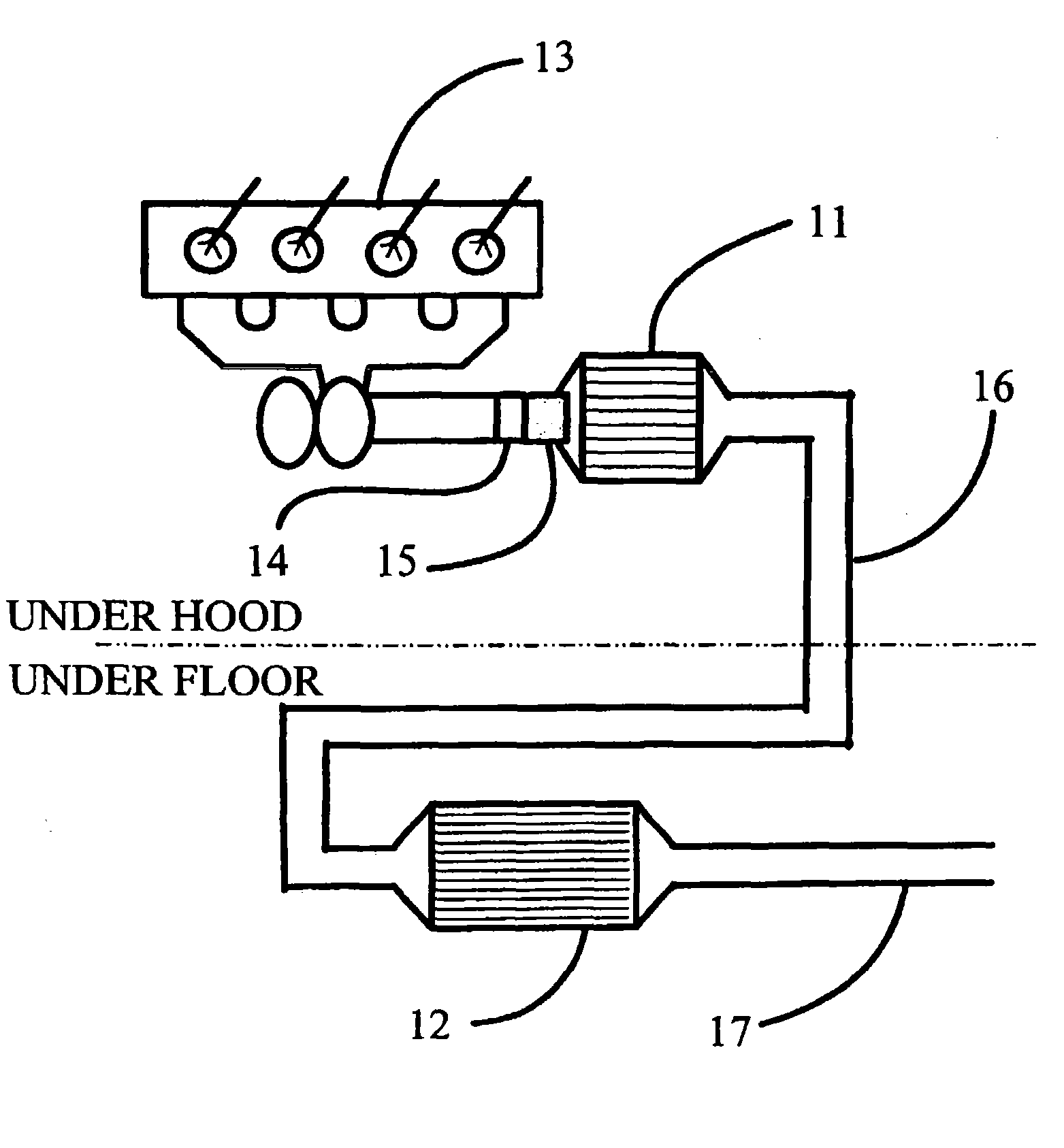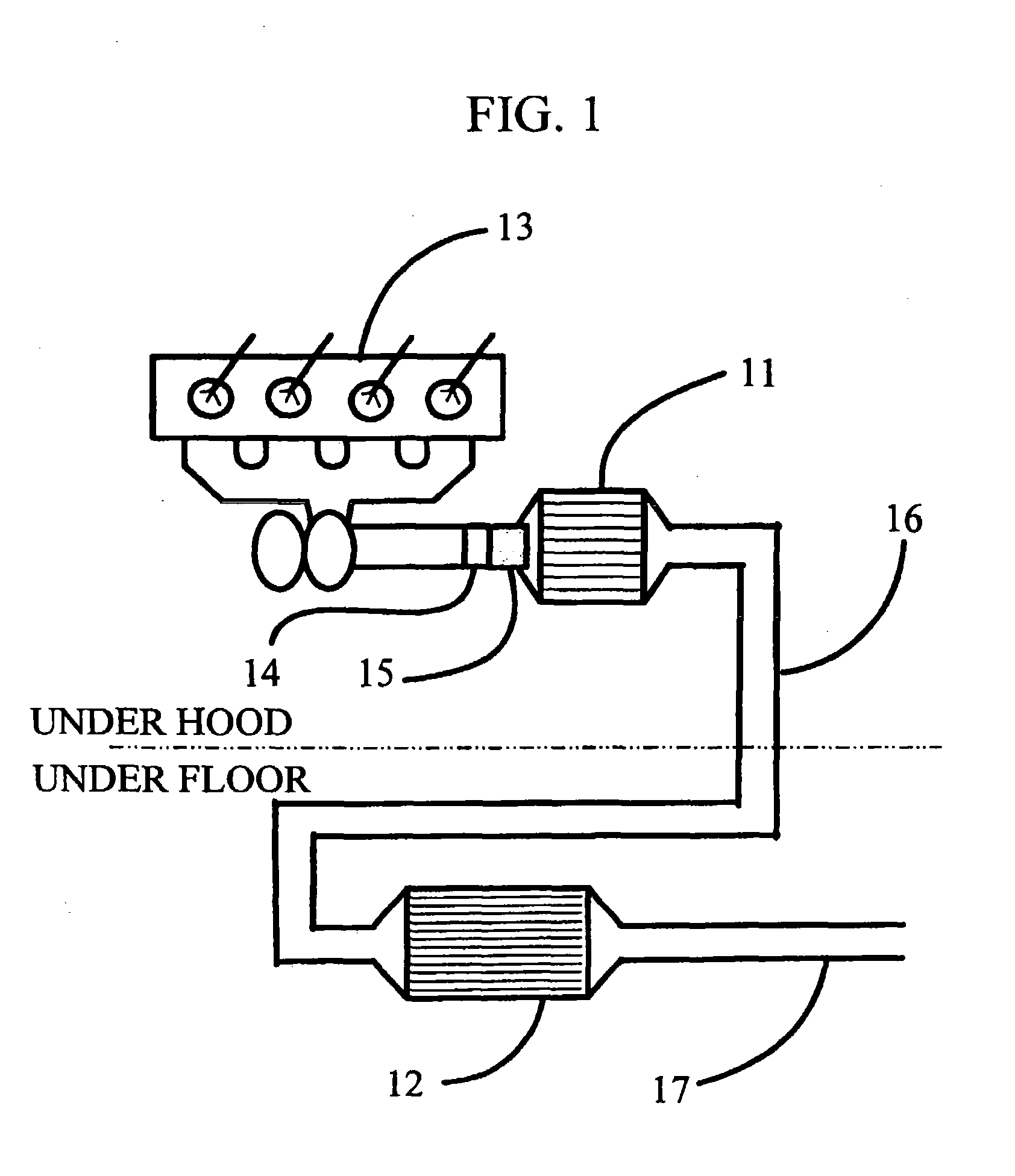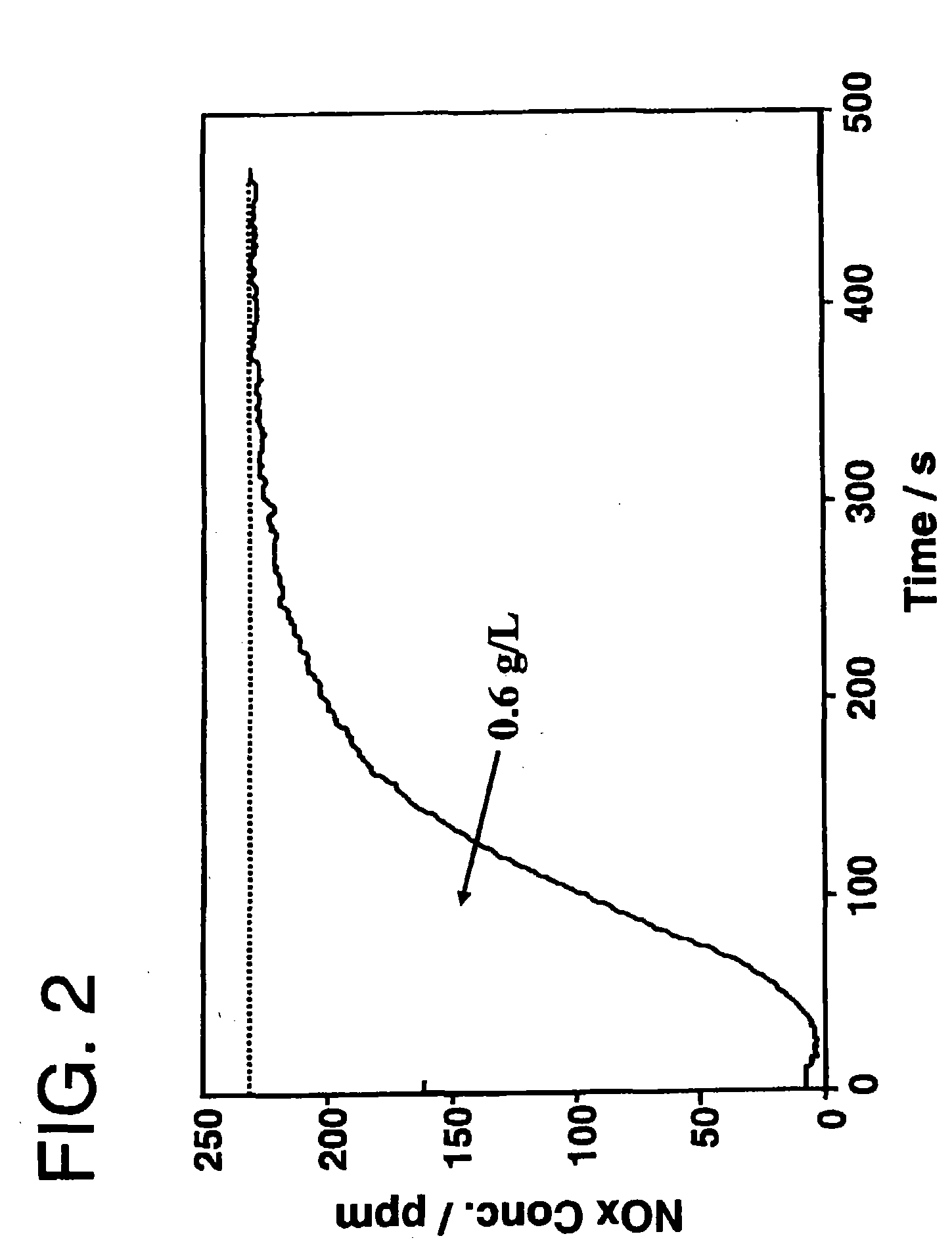Removing nitrogen oxides during a lean-burn engine cold start
- Summary
- Abstract
- Description
- Claims
- Application Information
AI Technical Summary
Benefits of technology
Problems solved by technology
Method used
Image
Examples
example 1
[0027] Referring to FIG. 2, the NOx concentration profile at the exit of a main LNT with a fuel-lean air feed that contains 250 ppm of NO during a storage capacity measurement at 150° C. can be seen. At time 0, a gas stream was switched from a fuel-rich feed containing no NO to a fuel-lean air feed containing approximately 250 ppm of NO. The difference between the exit NOx concentration and the inlet NOx concentration (250 ppm), which was measured with a chemiluminescence NOx analyzer, corresponds to the amount of NOx absorbed by the catalyst. A blank cordierite sample was used to correct for the flow dynamics. Integrating the difference between the outlet NOx concentrations after the blank cordierite and the catalyst with time yields the total amount of NO absorbed by the catalyst, i.e. yields the storage capacity.
[0028] After about 200 seconds, the outlet NOx concentration approached, but did not reach the inlet NOx concentration, e.g., the outlet NOx almost reached 250 ppm. This...
example 2
[0030] Referring now to FIG. 4, the exit NOx concentration during a storage capacity measurement at 150° C. and a subsequent temperature ramp to 600° C. in the fuel-lean feed can be seen. The composition of the fuel-lean exhaust feed is set forth in Table 1 above. After the close-coupled LNT was saturated with NOx at 150° C., the temperature was gradually increased to 600° C. During the heating, additional NOx storage occurred with a small absorption peak at approximately 250° C., followed by a much larger absorption peak at approximately 330° C. Although not wishing to be bound by theory, the small absorption peak at 250° C. may be due to a minor storage component in the catalyst, and the larger absorption peak at 330° C. may be due to the formation of barium nitrate. At 350° C., the LNT began to release the stored NOx. As shown in FIG. 4, a peak release of NOx occurred at approximately 420° C. At approximately 600° C., the exit NOx concentration returned to the level of the inlet ...
PUM
| Property | Measurement | Unit |
|---|---|---|
| Temperature | aaaaa | aaaaa |
| Temperature | aaaaa | aaaaa |
| Temperature | aaaaa | aaaaa |
Abstract
Description
Claims
Application Information
 Login to View More
Login to View More - Generate Ideas
- Intellectual Property
- Life Sciences
- Materials
- Tech Scout
- Unparalleled Data Quality
- Higher Quality Content
- 60% Fewer Hallucinations
Browse by: Latest US Patents, China's latest patents, Technical Efficacy Thesaurus, Application Domain, Technology Topic, Popular Technical Reports.
© 2025 PatSnap. All rights reserved.Legal|Privacy policy|Modern Slavery Act Transparency Statement|Sitemap|About US| Contact US: help@patsnap.com



